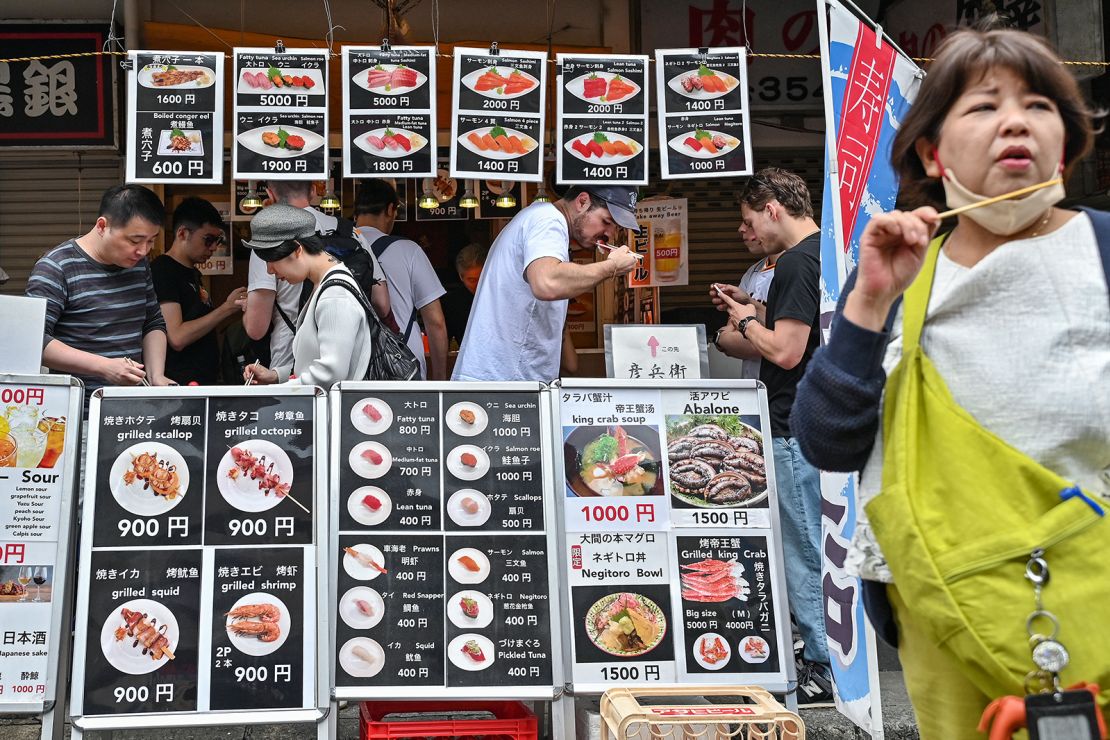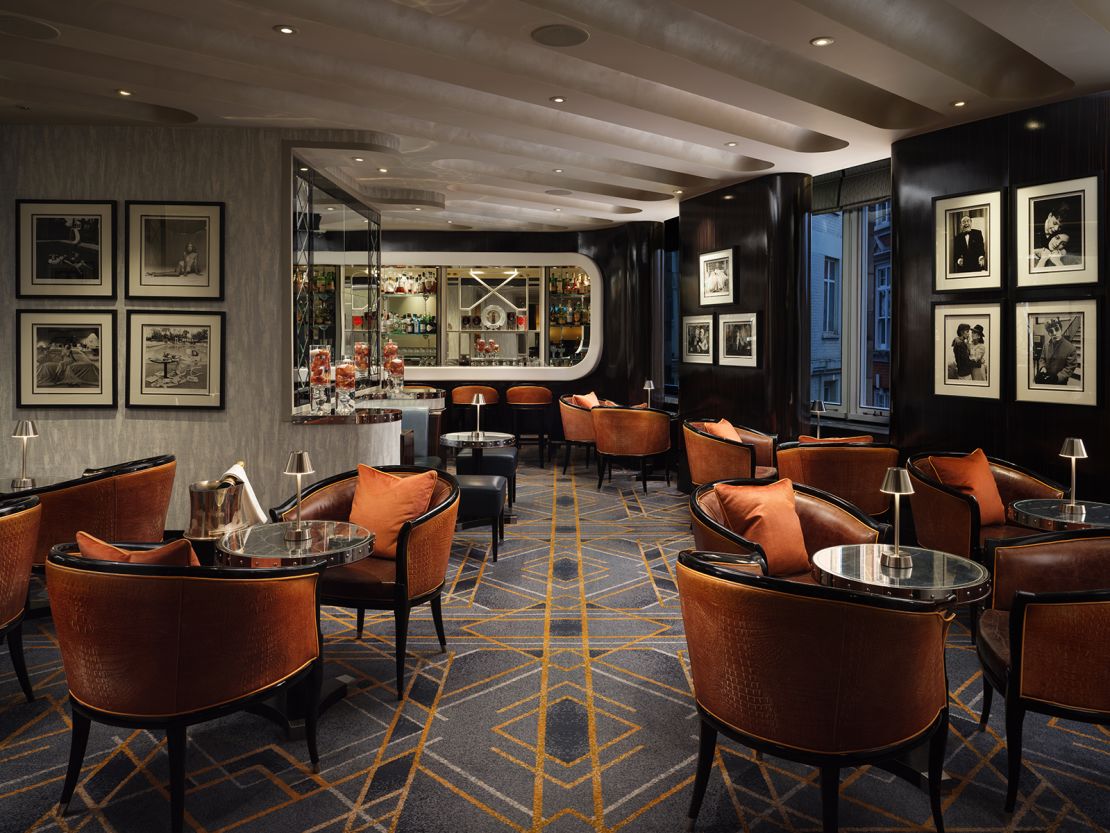During his journey to the United States more than a century ago, British theatrical impresario Richard D’Oyly Carte was so impressed by the new American hotels he stayed in that he decided to return home and open Britain’s first purpose-built luxury hotel in 1889 – the Savoy.
Like every high-end hotel, it needed to have a solid food and beverage offering. Enter, the American Bar. Deliberately designed for US visitors, over the decades it attracted such luminaries as Ernest Hemingway and Marilyn Monroe.
Nowadays, thanks to the many culinary awards, guidebooks and TV shows out there, experiencing local cuisine is an essential part if not the entire focus of any travel experience. But, like the patrons of the American Bar before us, seeking out home comforts when abroad is still something we all do. And there’s a good reason.
“The Savoy itself was the first luxury hotel to open in London, designed to appeal to discerning American travelers,” says Andrea Di Chiara, bar manager of the now-famous venue, which remains London’s longest-surviving cocktail bar and was named the world’s best bar in 2017.
“The American Bar opened as an extension of that ideology, and continues to draw an international crowd.”
It shouldn’t be a surprise that venues both at the high and low ends of the travel scene are cashing in on the homesick or those seeking familiar flavors.
In a culinary tourism market projected to be worth over $1.1 trillion in 2024, more than 34% of tourists surveyed in 2022 said they chose destinations inspired by the cuisine they liked, according to a recent report by Future Market Insights.
Those numbers are expected to keep climbing, predicted to reach $5.6 trillion in 2034, a whopping 17.1% compound growth rate per year.
This phenomenal growth might be positive news for those in the dining industry, but it also means that a person is more likely to be judged for food neophobia – the fear of trying new foods – or side-eyed for opting for something they could find back home.
At a recent dinner in Hong Kong, one of my companions admitted that all he wanted on his first day in Paris was a steaming bowl of noodle soup to soothe his “Asian stomach.”
“Why would you even…?”
The idea was so unfathomable that another fellow diner couldn’t even finish his question. A few moments later, even he admitted, “Maybe I’d have an occasional craving for McDonald’s.”
Stories like this are far from rare, though many of us hate to admit it.
Most of us have a friend who gets teased for packing Diet Coke in their suitcase or admits to preferring Starbucks to a local coffee shop when traveling. My British colleague brings Yorkshire teabags with him when he heads abroad. My own mother, who lives in Hong Kong, travels with a mini rice cooker and a bag of rice “for emergencies.” When I lived in London, I missed the taste of Hong Kong bubble waffles so much I opened up a market stall.
We are all essentially seeking the same thing – a taste of familiarity in a foreign land – and none of us should be mocked, according to industry experts and scientists who say the decision to try or not try unfamiliar local dishes is intrinsically programmed within us.
A 2019 joint study carried out by professors in the US found that cultural familiarity, motivational factors and personality traits influence tourists’ food decisions more than cost and convenience.
“Travelers seemed more driven by comfort and safety,” says Angel Gonzalez, an associate professor at California State University, Monterey Bay who co-authored the study.
“Those who are more cautious or unfamiliar with local cuisine tend to lean towards familiar food.”
Interestingly, Americans of Hispanic ethnicity are more inclined to try local foods, he says.
“This may relate to broader familiarity with diverse food experiences,” Gonzalez speculates, while reminding us that the research only offers a limited snapshot of food behaviors. The study was based on interviews with 330 people in the US, all questioned on how likely they’d be to try local foods when traveling.
“While the findings are interesting, we’d need a more extensive study to offer a deeper and more nuanced understanding of why travelers make certain food choices abroad,” he notes.
In the absence of a more definitive explanation, Judson Brewer, a neuroscientist and behavioral professor at Brown University, invites us to look inward.
He tells CNN there are two key processes our brains go through when it comes to food choices.
“Travel is, or can be, a trade-off between the excitement of discovering new things and going to what we know,” says Brewer, who wrote a book on eating behaviors called “Hunger Habit.”
“Do we try a new food or eat at the familiar fast food franchise that happens to be on the corner?”
In these situations, he says our orbitofrontal cortex, which is in charge of our decision-making processes, tries to assess which option is more rewarding for survival.

Dubbed the explore vs exploit dilemma, this instinct is rooted in our hunting and gathering ancestry – when humans had to decide whether to find a new food source or forage what was in front of them before resources ran out.
In the case of traveling, he says our planning brain might decide that it’s safer to stick with food we know to avoid potential physical discomfort.
“Our brains don’t like uncertainty, and travel (especially to new places) can be scary,” says Brewer.
These uncertainties can trigger anxiety, leading to another process in our brains.
“As kids, we learn to connect food with mood and emotion. We learn to associate food with comfort – hence the term ‘comfort food,’” Brewer says.
“The psychological comfort provided by familiar foods is akin to a sense of ‘home.’”
Food has increasingly become a way to cope with our feelings, thanks to modern marketing campaigns and pop culture. Remember when a broken-hearted Bridget Jones dug into a tub of ice cream in the movie?
When emotions arise, the planning part of our brain goes offline and the survival part takes the wheel.
To numb the pain, it encourages us to find consolation in food – even when we aren’t hungry – releasing dopamine (a feel-good hormone) as a reward and reinforcing the habit of choosing familiarity.
“Familiar tastes can serve as an anchor that provides psychological comfort and security, making us feel less adrift in a new environment,” says Brewer.

At 3,454 meters (11,332 feet) above sea level, Switzerland’s Jungfraujoch is the highest accessible train station in Europe. The snowy mountain destination is a great example of an attraction that has tapped into homesick travelers’ needs.
In the 1980s, when Jungfrau Railways noticed it was welcoming more Asian guests, management began serving noodle soups in its mountaintop station. In 2023, it opened King Noodle Bar, a restaurant specializing in Asian noodles that has since proven to be a hit.
The company also showcases regional culinary cultures when possible.
At Jungfraujoch’s Restaurant Bollywood, opened in 2000 to cater to the mountain’s Indian visitors, the menu features rosti (a typical Swiss dish with sautéed potatoes) with Swiss cheese, Zurich-style sliced chicken with mushroom sauce and homemade Swiss chocolate desserts alongside traditional Indian dishes.
“The aim is to combine local cuisine with international influences in order to offer our guests an authentic and varied dining experience so they feel at home even when they are away,” says Kathrin Naegeli, Jungfrau’s head of corporate communications.
Researcher Gonzalez emphasizes the importance of merging familiar flavors with local foods.
“This can help ease anxieties for cautious eaters while encouraging them to try something new,” he says.

Back when the American Bar opened in the late 1880s, international visitors perhaps had more of an excuse for seeking out its comforts. A guide to London produced by Langham Hotel in 1890 tellingly had sections for hospitals and docks, but offered no restaurant recommendations.
Today, the bar still serves many familiar flavors but these are interwoven with local offerings.
Gerald Quadros, the Savoy’s executive chef, says the American Bar’s menu “is inspired by staple dishes from the US, which we’ve refined using British ingredients to create a menu that is both familiar and surprising to our guests.
“The perfect example of this is our sliders, which are made with organic Denbighshire beef, highlighting the connection between American and British food cultures,” he says.
“The beauty of travel is that it inspires creativity as cultures merge and influence each other.”
In addition to bringing cultures together, there’s also a scientific reason why we should strive to sample more new foods.
Brewer says habits require the least amount of energy output because learning takes energy and exploration requires brain power.
“If people have a bunch of foods that they like and they’re happy eating those foods, why would they waste time and energy eating something that they might not like?” Brewer asks.
“Think of our bodies: If we are always sitting in a chair, we’re more likely to lose flexibility in our muscles and hurt our muscles. You can see how that’s not healthy and that’s the same thing for our minds.”
The neuroscientist has developed methods to help his patients overcome unhealthy eating habits such as practicing mindful curiosity, as detailed in his books and lectures.

In short, Brewer says developing curiosity is key for cautious travelers to convert stress into a chance to grow.
“Instead of getting caught in the ‘oh no,’ curiosity can help us lean into the ‘oh, what is this?’ so we open up to experiences, food and otherwise,” he says.
It has helped Brewer with his own anxiety over the years and brought him new, unexpected experiences when traveling.
During a recent trip to Italy, his Italian postdoctoral fellow took him to a local family-run restaurant.
“Their specialty that night was donkey,” says Brewer, a vegan who has avoided meat for more than 20 years.
“I thought, ‘I’d probably never eat donkey in my life again so let’s try it.’ I was really curious. And the donkey was delicious.”
While the donkey didn’t convince Brewer to start eating meat, it’s an example of the mental stretch he talks about.
“Life is always changing. If we become too rigid, it makes it much harder to deal with change,” he says.
“Leaning into curiosity and exploring helps us keep our minds flexible. So when change is happening, we’re more likely to be able to accept it and work with it.”
Read the full article here


